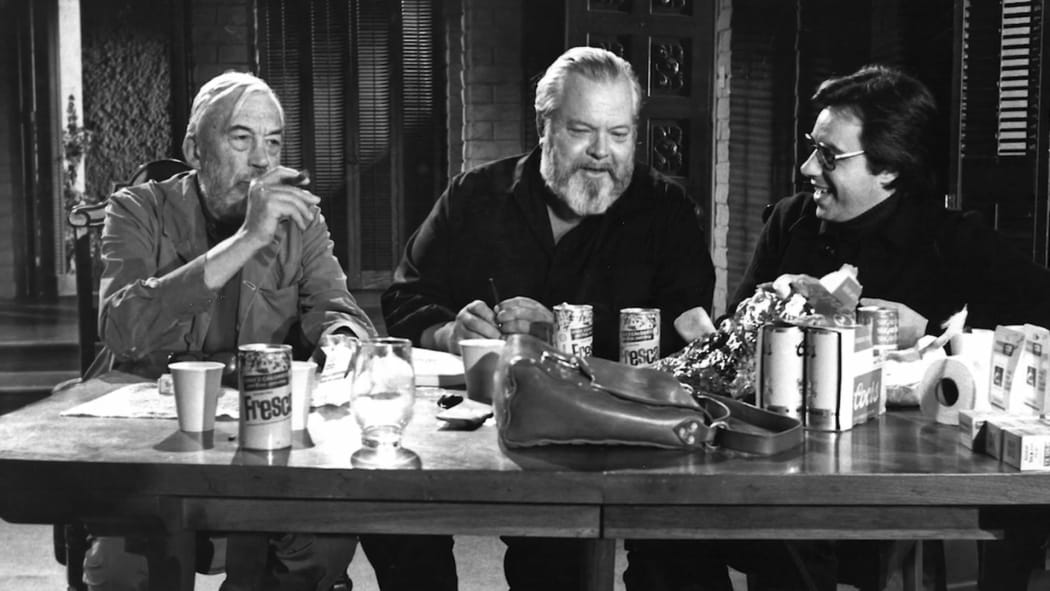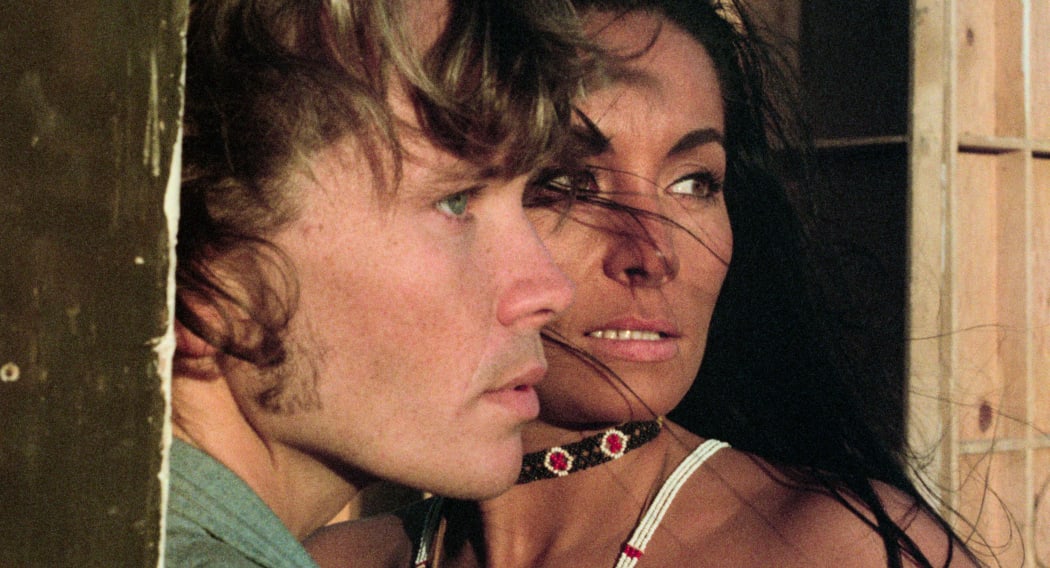Orson Welles’ final film, The Other Side of the Wind, is a self-absorbed but still virtuoso performance, says Dan Slevin.

John Huston, Orson Welles and Peter Bogdanovich on the set of The Other Side of the Wind. Photo: Netflix
For film buffs, Netflix remains a conundrum. Most of the feature films they produce are very middle-of-the-road, but with Alfonso Cuarón’s Roma they have the front runner for Best Picture next year. They are literally throwing billions of dollars at established television producers but their highest profile directors right now are the independently minded Joel and Ethan Coen. And they famously have no commitment to vintage and classic movies – except when they do.

Photo: Netflix
That commitment reached the light of day for Kiwis last week with the release (or upload or however you want to describe it) of The Other Side of the Wind, a film that the legendary Orson Welles began shooting in 1970 and that his collaborators finally finished without him earlier this year. If Netflix hadn’t stepped in with some big cheques, Welles’ final fiction feature film would still be The Immortal Story from 1968.
Like so many of Welles projects from the late 60s until he passed away in 1985, The Other Side of the Wind was self-financed, suffered a tortuous production process, became mired in legal wrangles over ownership – including famous complications from the 1979 coup in Iran – and seemed destined never to be seen.
While Welles was in exile from Hollywood, he could see European arthouse superstars like Antonioni head to the US to make acclaimed films like Zabriskie Point. With The Other Side of the Wind, he has a swipe at all sides – there’s a very amusing and beautifully photographed film-within-a-film that pastiches the trend for glorious widescreen visuals, impenetrable story and lingering nudity of the European style of the time – and he surrounded it with a tale of old Hollywood on the verge of extinction.
The great John Huston plays a fading director from the golden age, Jake Hannaford. It’s his birthday and he’s throwing a party, despite his latest picture – The Other Side of the Wind – being out of money and abandoned by its leading man. He is surrounded by what is left of the crew of his film – played by some familiar Hollywood character actors and other mates of Welles who were less accustomed to performing in front of the camera – and an inordinate number of hangers on – fans, students, journalists – most of whom, thankfully for Welles’ conceit, are carrying cameras or recording equipment.

From the film-within-a-film in The Other Side of the Wind, Bob Random and Welles’ collaborator (and lover) Oja Kodar. Photo: Netflix
Yes, Orson Welles appears to have discovered the mockumentary. And it’s exceptional. Finally pieced together based on Welles’ shooting script – unusually for him he didn’t spend the next 20 years revising it as he did with the also notoriously unfinished Don Quixote – his extensive notes and the scenes that he had managed to cut together himself, what we have is an energetic, funny, tragic and utterly self-absorbed film that demonstrates anew what he have known since Citizen Kane in 1941 – that Welles was a restless inventor and reinventor of cinema.
While it feels impressively modern in its style - especially the editing credited to Welles and Sam Raimi’s regular editor Bob Murawski – the world is very much of its misogynistic and booze-addled time. Welles was a lot of things but he was not especially enlightened about gender representation.
Also in the Netflix package surrounding The Other Side of the Wind are two documentaries. They’ll Love Me When I’m Dead about the production of the film, giving important credit to Welles’ collaborators like long-suffering cinematographer Gary Graver and A Final Cut for Orson, about the extensive and sensitive work needed to be done to reconstruct a film that was never properly constructed in the first place. Special mention here must go to actor Danny Huston, who dubs his own father’s voice leaving no doubt about how amazing that must feel like, and 86-year-old composer Michel Legrand whose score really helps tie the thing together.
The Other Side of the Wind is playing on Netflix now.

